
Santa Clara Pueblo artist finds “home” as a sanctuary for community
Listen to the Story
Click here for audio transcript
(sounds of footsteps walking over leaves)
Come on in!
(sounds of walking in entry way and a door opening)
All of these houses here have studios in them. Everyone in my family makes artwork, whether professionally for a source of income or out of, you know, a love and a need to create. And so we’re looking at homes, we’re looking at places where people have made their lives, built their homes, and then we’re also looking at places where people are continuously creating.
My name is Eliza Naranjo Morse, we’re in Española, New Mexico. We’re on Santa Clara Pueblo tribal land. My indigenous roots – I’m a Tewa woman, I come from a Tewa woman and my dad is a European from Connecticut.
(sounds of husking corn)
I think it’s kind of special. It’s like a sanctuary. It’s really holding space. There’s a sense of community here, there’s a sense of family here, there’s a sense of agency here. People can live as they want to live. There’s I think a real spirit of relationship here with the land. From the farming to the waking up and it’s beautiful knowing that our the rest of our Pueblo family is right over that way.
In my knowing of art, it is not separate from the rest of our lives. It is interwoven with our daily activities, it’s absolutely pushed forward by a sense of our creative spirit that then manifests in all kinds of ways. There is no limitation to that, it doesn’t exist necessarily in a museum, or the purpose isn’t for gallery walls, or to hope that someone will buy your work. That is like a Western invention.
You know there are days where I drive up to my auntie’s house, and we’re getting ready to do some writing or some language work or go to the fields or something. And I try to remember to take a breath, and be present and slow down. So that I can enter an experience of relationship and experience of creativity. When I think of community, we’re not existing in these isolated bubbles anymore, we are affecting each other all of the time.
So, that feels like an important thing for me to acknowledge as we look forward. That when we have this sense of home or family, we have the sense of home or community, but really, we’re all in this singular home, right? And we’re really at a place where it’s like, with language preservation, now is the time to be thinking about solutions.
There are no small successes in my mind when we’re talking about language preservation or cultural maintenance. We can look in any area of our lives really right? From caring for the water, to caring for the land, to trying to figure out how we solve these challenges of atrocity happening to the land and to the people within it. There are all of these incredibly smart people bringing solutions, and these tools, and knowledge. They’re carrying on with them expressions of an extended story.
What is the meaning of
home?
Logan Booth speaks with Eliza Naranjo Morse, a multimedia artist and Tewa woman who finds home within the lands of her Santa Clara Pueblo community. She explains what it means to find inspiration from the interconnectedness in her life experiences in relation to her artistry and understanding of place.
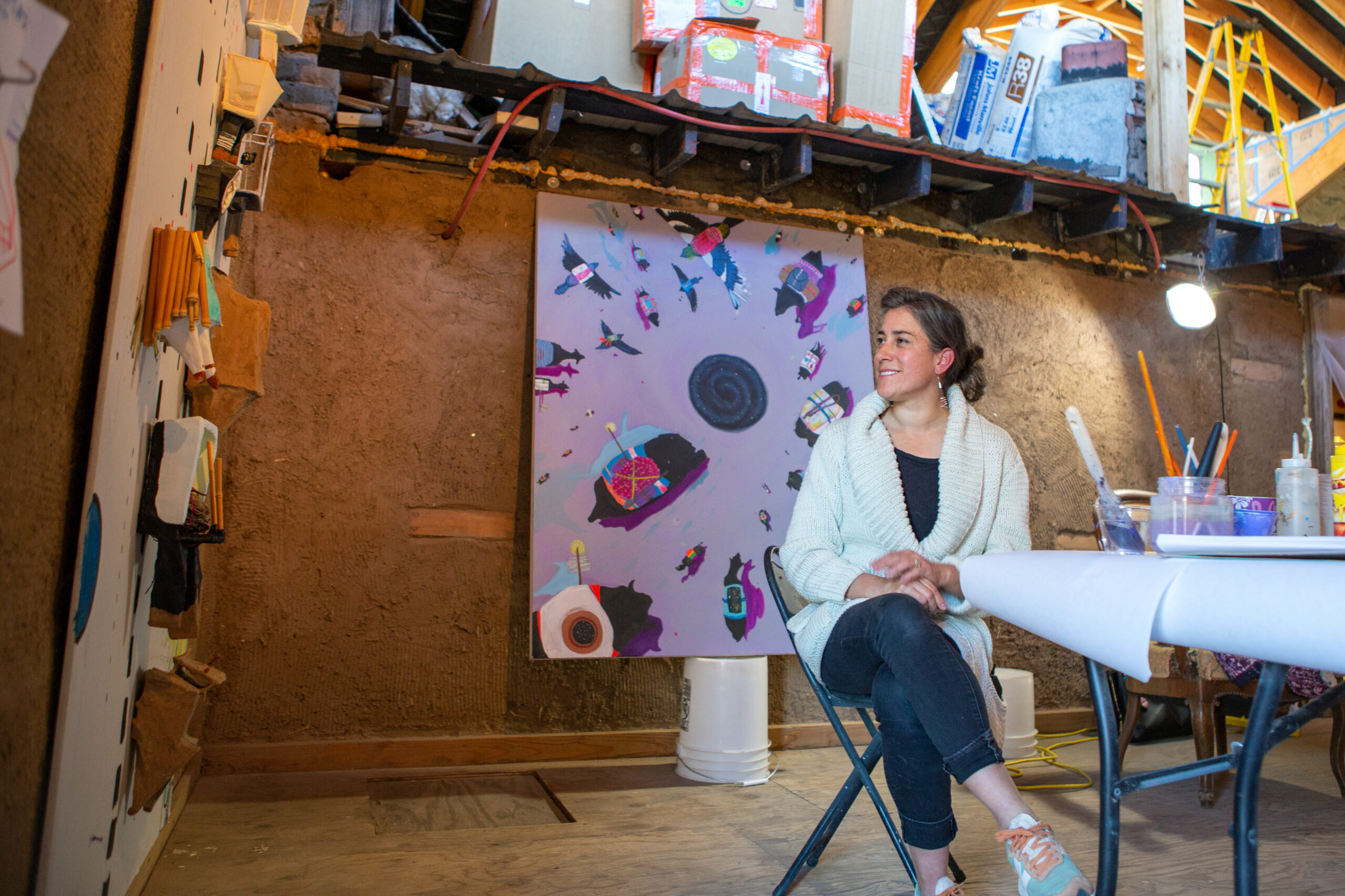
“There’s a raw process of creating that I really enjoy,” Eliza Naranjo Morse (Tewa, Santa Clara Pueblo) says at her home studio in Española, New Mexico, on Monday, Nov. 13, 2023. Behind her is a vibrant purple painting titled Light from Love, 2024. Acrylic paint on canvas.
LOGAN BOOTH / NEXTGENRADIO
Eliza Naranjo Morse (Tewa, Santa Clara Pueblo) feels home is a sanctuary for her artistry. Growing up on traditional Santa Clara Pueblo land in Española, New Mexico, she has always looked to her community as a sort of guidance in her grounding at home.
In her family’s communal field that Naranjo Morse cultivates year-round, it becomes clear that her familial ties have a deep history of resilience with the place she resides on. She stands on a piece of land that was given back to members of the Santa Clara Pueblo people stemming from the 1848 Treaty of Guadalupe Hidalgo. According to Porter Swentzell, (Santa Clara Pueblo,) Ph.D., Executive Director of Kha’p’o Community School, the treaty recognized the end of the Mexican-American War, which recognized Pueblo people as rightful owners of the land, as well as U.S. citizens. However, since the United States failed to recognize Pueblo people as U.S. citizens in that timeframe, it became a catalyst for a series of U.S. Supreme Court cases around the ownership of land for the Pueblo people.
But her grandparents didn’t receive the land that was awarded to them on the treaty from lands that have been foreclosed on until the 1940s. The land has since then been passed down to Naranjo Morse’s parents, then to herself. Cultivating the land is an integral part of Naranjo Morse’s identity and understanding of the space she inhabits.


Above: In a family photo taken around 1950, Eliza Naranjo Morse’s grandparents, Rose and Micheal, make firewood, likely for heating and cooking inside the house and in the pungteh, or adobe cooking oven.
Below: Nora Naranjo-Morse (Tewa, Santa Clara Pueblo), right, maintains her art installation Always Becoming with the help of her daughter Eliza Naranjo Morse (Tewa, Santa Clara Pueblo), left, in summer 2007. The installation is still featured at the National Museum of the American Indian in Washington, D.C.
COURTESY OF ELIZA NARANJO MORSE
Farming is viewed as a source of strength and pride for her Española community. Naranjo Morse finds many uses in the agriculture that she cultivates. Naranjo Morse acknowledges the farm not only as an outdoor studio, but as a responsibility to take care of the land from her Pueblo ancestors.
“I come back to the field every year. There’s this maturity that happens as years pass, it’s like a studio in a sense of commitment to a process. It’s a sense of experimentation. And then as I get older, the sense of generosity within it shows itself,” Naranjo Morse said.

YUNYI DAI / NEXTGENRADIO
“THERE IS A SPIRIT OF CREATIVITY IN ANYTHING YOU CHOOSE TO DO.”
As a multimedia artist, she finds resilience in using these materials she takes care of for the Pueblo community she is largely involved in.
As a Cultural Movement Instructor at the Kha’ P’o Community School, Naranjo Morse works as part of the Tewa Team whose primary efforts are to relay the values, language and cultural ways of her community. In the field, she breaks down larger pieces of corn stalk into smaller pieces with ease, collecting the stock for an upcoming traditional sandbox made of Adobe clay and traditional materials. One way in which Eliza builds community is by using materials she gathers from her home for her artistry.
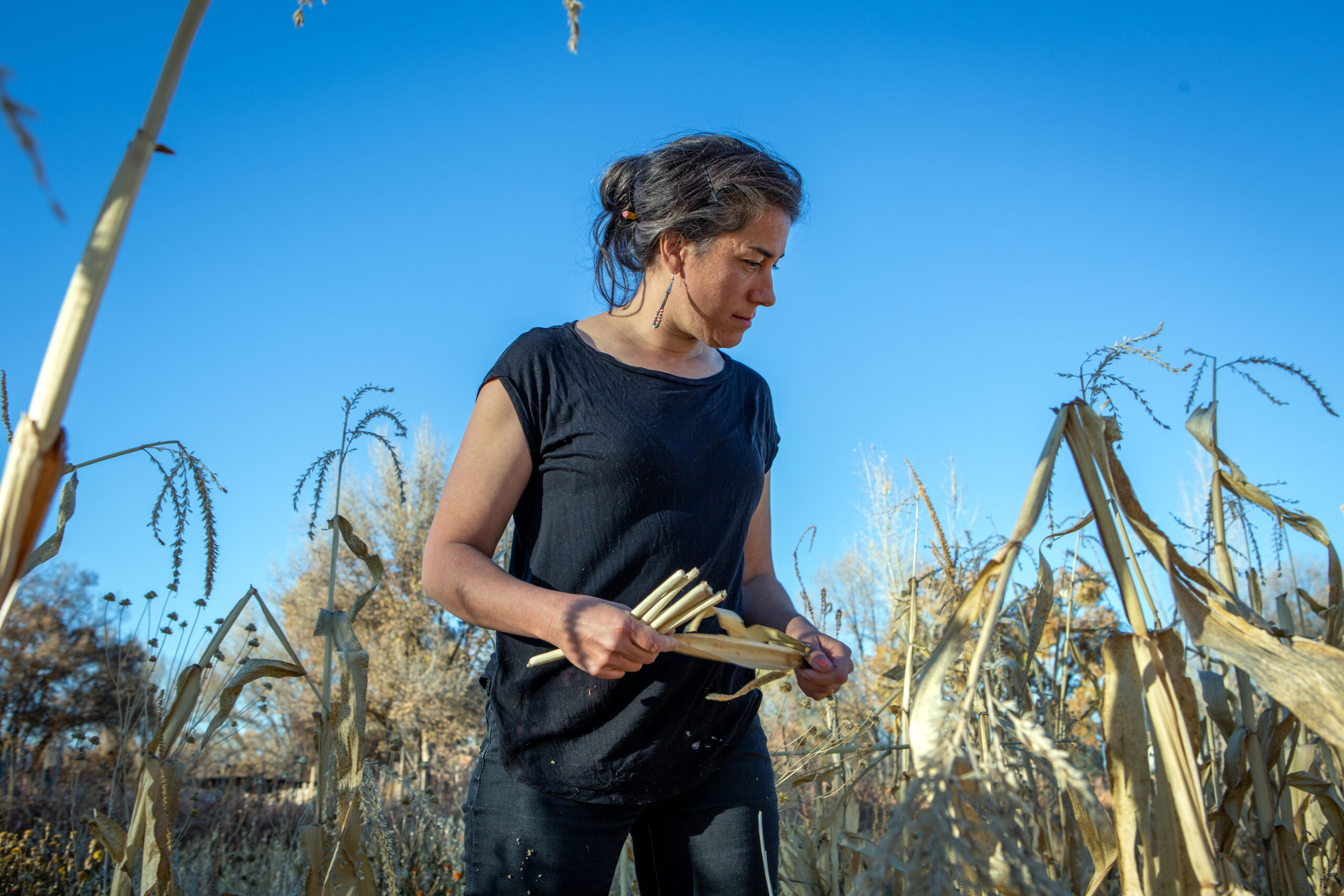
Eliza Naranjo Morse (Tewa, Santa Clara Pueblo) gathers corn stock from a field she shares with her family in Española, New Mexico, on Monday, Nov. 13, 2023. She will use the corn stock in an upcoming project with the Kha’ P’o Community School. The materials will fill a Pueblo sandbox to help students learn about the adobe clay making process with natural materials.
LOGAN BOOTH / NEXTGENRADIO
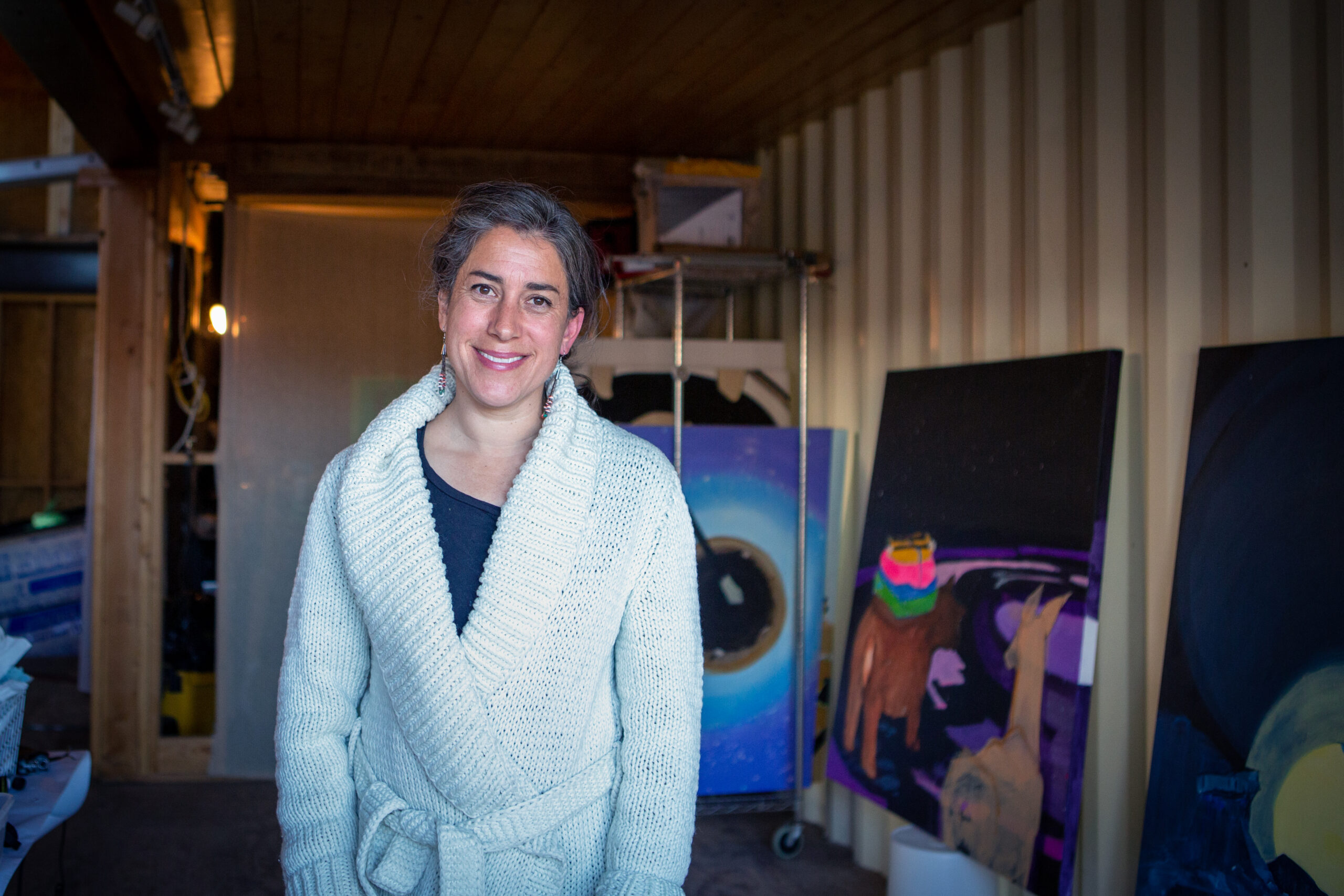
“I’m fortunate to get to see my work in education and museum institutions, meeting all kinds of people who are gathering together around a meeting table and just bringing their brilliant selves to create something new,” Eliza Naranjo Morse (Tewa, Santa Clara Pueblo) says in her home studio in Española, New Mexico, on Monday, Nov. 13, 2023.
LOGAN BOOTH / NEXTGENRADIO
In her home studio space, Naranjo Morse displays her various art pieces, from large painted canvases to sculptures using clay to depict where we are as human beings, and where we’re going. Morse finds a universe of possibilities in imagining how people within her community come together to gather knowledge and tools that support each other. She beamed as she shared her creative process as something that’s not a Westernized definition of beauty.
“A lot of them are kind of rough. They’re made from material I gather. And they’re kind of like the freest creative process. I begin by building structures, and then changing them, and then adding material from the field and trash I find at the dump for treasures,” Naranjo Morse said.
She sees her work in education, museum institutions, and meeting different people as these sorts of creative spiritual vessels. To her these institutional structures are a place for possibility.
Naranjo Morse is currently in the process of building her space, which was passed down from her mother in 1984. Her adobe structure serves as the heart of her home. Her mother asked her to keep the oven, as she works to build her home on the outside, weaving together her memories into a place that she is able to freely create because it’s something that she loves to do.
“When I think of art from my mother’s side of the family, well, gosh, and my dad’s too, as well, there’s a sense of like, you create because you love to,” Naranjo Morse said. “In the food we cook, in the way we educate our children, in the way we care for our elders, it doesn’t always have a tangible or, like, commodified result. But there is a spirit of creativity in anything you choose to do.”
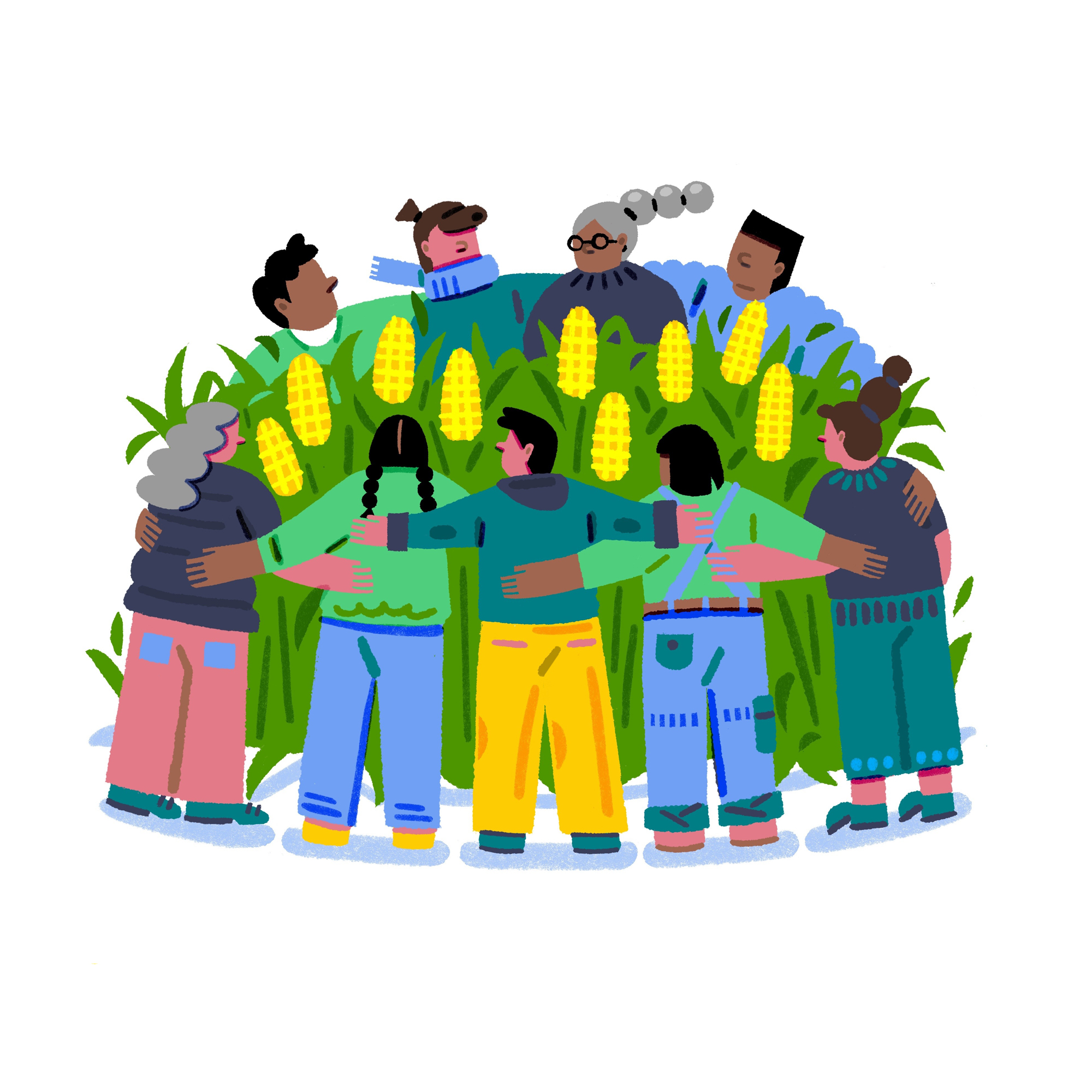
YUNYI DAI / NEXTGENRADIO
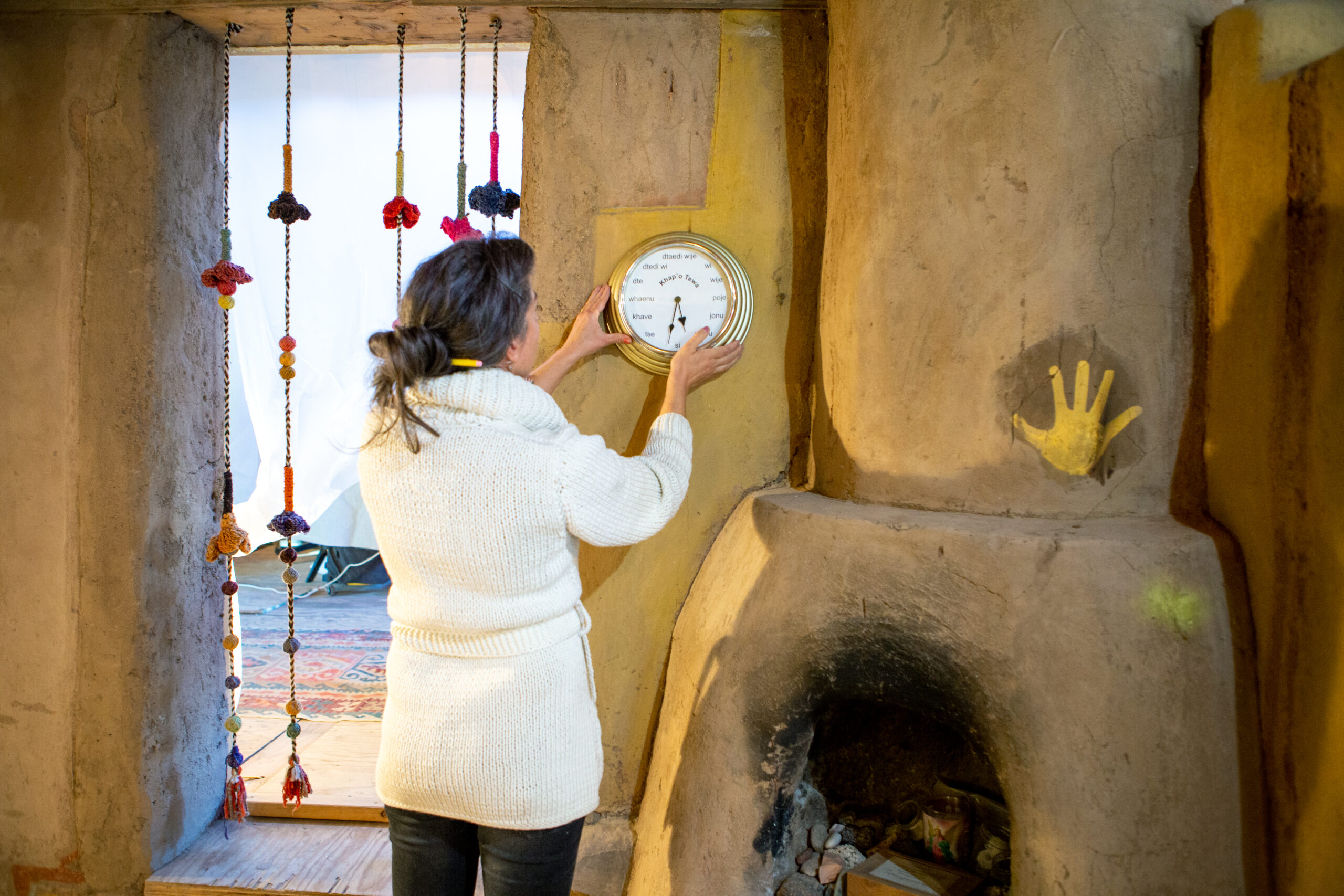
Eliza Naranjo Morse (Tewa, Santa Clara Pueblo) hangs a clock that tells time in the Tewa language on Monday, Nov. 13, 2023 in her kitchen in Española, New Mexico. The clock rests alongside a traditional Pueblo fireplace her parents originally built in 1984. “When my mom gave us this place, she said, ‘If you can, just keep the fireplace.’ She learned to build fireplaces from her dad.”
LOGAN BOOTH / NEXTGENRADIO

Eliza Naranjo Morse (Tewa, Santa Clara Pueblo) hangs a clock that tells time in the Tewa language on Monday, Nov. 13, 2023 in her kitchen in Española, New Mexico. The clock rests alongside a traditional Pueblo fireplace her parents originally built in 1984. “When my mom gave us this place, she said, ‘If you can, just keep the fireplace.’ She learned to build fireplaces from her dad.”
LOGAN BOOTH / NEXTGENRADIO
